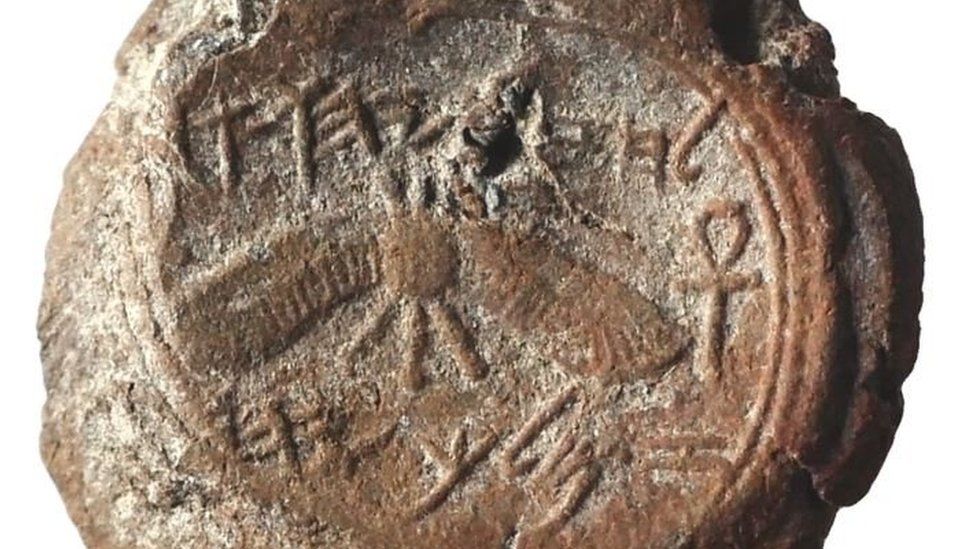Impression of biblical king's seal found in Jerusalem
- Published

Israeli archaeologists say they have found a 2,700-year-old piece of clay inscribed with a biblical king's seal.
It is thought the oval bulla, which is 13mm (0.5in) wide, was once attached to a papyrus document signed by Hezekiah, one of the kings of Judah.
It was found by a team from the Hebrew University of Jerusalem at the site of an ancient dump, beside the wall that surrounds Jerusalem's Old City.
It is believed to have been thrown out with the rubbish from a royal building.
The bulla is imprinted with the symbol of a winged sun and an inscription in an ancient Hebrew script, saying: "Belonging to Hezekiah [son of] Ahaz king of Judah".
Hezekiah, who ruled from 727-698BC, is described favourably in the Bible, as well as in the chronicles of the Assyrian kings, who ruled during his time.
Although he was an Assyrian vassal, he successfully maintained the independent standing of the Judean Kingdom and its capital Jerusalem, which he enhanced economically, religiously, and diplomatically.
"He trusted in the Lord God of Israel; so that after him was none like him among all the kings of Judah, nor any that were before him," says one verse in the second Book of Kings in the Bible.
The bulla was found in 2009, but was put into storage after an initial inspection failed to establish its origin. Only recently did an archaeologist discern what the inscription said.
Eilat Mazar of the Hebrew University of Jerusalem's Institute of Archaeology said the bulla sealed a document written on a papyrus rolled and tied with thin cords, which left their mark on the back.
"This is the first time that a seal impression of an Israelite or Judean king has ever come to light in a scientific archaeological excavation," she added.
- Published30 October 2014